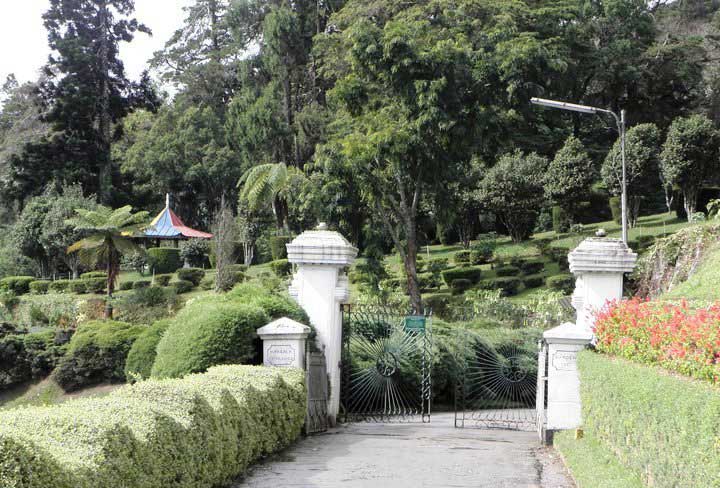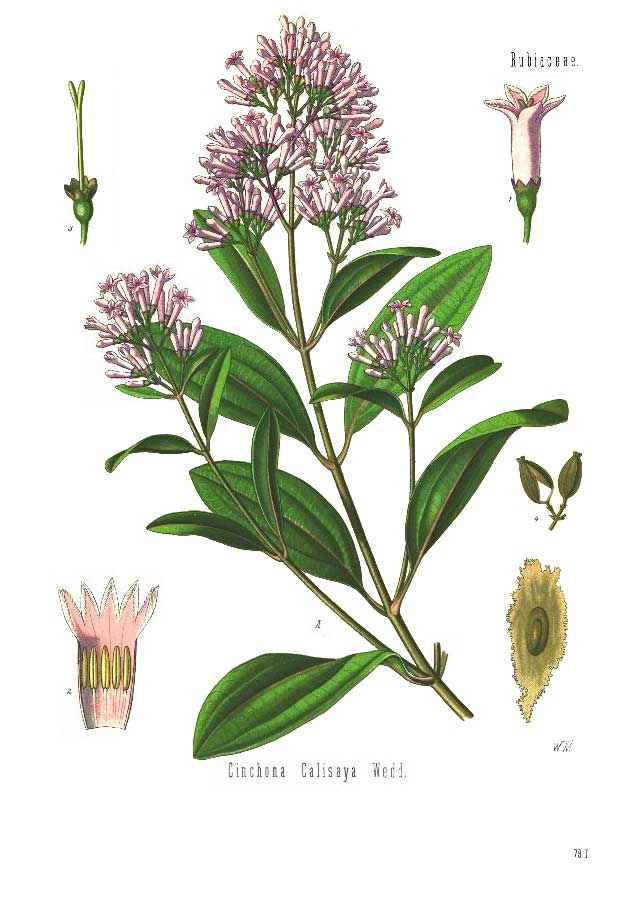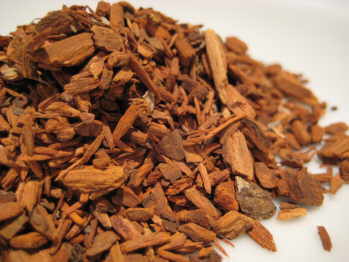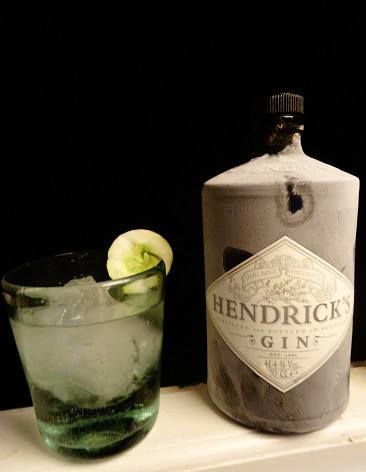 In the mid 1850’s, British plans to continue to both build and develop the Empire were facing a serious problem – malaria. Although many of Britain’s best and brightest were being sent overseas, far too many were succumbing to and even dying from this deadly disease. Those lucky to survive an attack would also find themselves prone to recurrences, debilitating attacks of chills and fever that drained the body of energy for weeks at a time.
In the mid 1850’s, British plans to continue to both build and develop the Empire were facing a serious problem – malaria. Although many of Britain’s best and brightest were being sent overseas, far too many were succumbing to and even dying from this deadly disease. Those lucky to survive an attack would also find themselves prone to recurrences, debilitating attacks of chills and fever that drained the body of energy for weeks at a time.
Such an attack – and its aftermath – are ably described in the excellent 1954 film “The Beachcomber” adapted from Somerset Maugham’s story “The Vessels of Wrath”. In it, the pious Missionary Owen Jones suffers an attack of malaria, leading his virginal sister Martha to engage in a dangerous mission with the unreliable drunkard “The Honourable Ted” as her sole support. It ends well, but not without hell being raised by angry villagers and a scene of being ritually stomped to death by Elephant. The fact it was the pious Missionary who suffered malarial systems is telling – strictly teetotal, he was unwilling to down a couple of strong Gin & Tonics to alleviate his symptoms.

At this time when prevention against malaria bearing mosquitos was impossible, a cure of sorts had to be found, at least to depress the symptoms. The British, with men and women dropping like flies all over Empire, put out the call to find a solution. Failure to have done so would have had serious implications for their territories in Central America, Africa, and Asia. By 1860, they had found what they were looking for, and as a direct result of the strength and reach of the Empire at that time. It was established that the bark of the Cinchona plant acted as a malarial suppressant.  This plant, native to Peru, was known to the Spanish Crown, whose Countess of Cinchona had reputedly been cured of malaria from its use in 1742. The British got to hear of this, obtained samples of the plant, and conducted preliminary tests, which turned out well. At this point, the search went on throughout the Empire to find the optimum place, ideally close to British controlled tropical areas that needed the  cure, to grow and harvest the plant. It was a botanist based in Kandy, George Henry Kendrick Thwaites who took up the challenge on behalf of Ceylon, and after examining some of the plants and listening to accounts of their growing conditions in their native Peru, transplanted several bushes to a site just outside of Nuwara Eliya known as Hakgala, in 1861. Tropical warm during the day, cool at night, with plenty of precipitation yet protected by a massive rocky outcrop, the Cinchona plants thrived. Within two years the annual production of Cinchona from what was now called the Hakgala Botanical Gardens went from zero to 7,000 tonnes.
The part of the plant containing the active ingredient was the Cinchona bark, and the easiest way to administer it was processing it into what became known as Quinine and dissolving it in tonic water. Quinine though imparted a rather bitter taste, and one that would need to be matched with a suitable adult drink in order to make it easier for people to consume, and preferably without much persuasion. Constant imbibing of Cinchona Quinine infused tonic water would keep malarial symptoms at bay indefinitely.

This realization changed the very nature of British Expatriate drinking habits. The whisky and soda had reigned supreme, yet the adding of quinine in tonic form didn’t match very well with Whisky. Desperate to get expatriate Empire, literally back on its feet the British Government changed the laws of the time concerning the distillation of Gin – then exclusively reserved only for production in London – and awarded two licenses for Gin to be made in Asia, one in Bombay, and the other in Colombo. Both these Gins still live on today, as I have written about here.
Gin, it was realized, when added to a fizzy tonic water containing cinchona quinine, was both easy to drink and a thirst quencher in exactly the hot, humid climates that the malaria mosquito thrived in. Within a decade, the Gin & Tonic became the Expatriate drink of choice, a position it certainly retains to this day.
As for the Hakgala Botanical Gardens, the immediate success of their experiments with Cinchona sealed its destiny as a scientific base, a position it still retains, examining and testing different plant species to learn more about their properties and suitability for cultivation in tropical climates. The original Cinchona planation is still there, the plants now 150 years old and massive.
Yet the production dropped off – Cinchona was expensive to produce, and a cheaper varietal of the active Quinine ingredient was found in the more widespread and easier to cultivate Willow Tree. Experiments continued instead at Hakgala with various different types of tea plants – these nurseries are also still there.
Nowadays, much of todays medicinal Quinine is synthesized, although still used as a malarial suppressant. The Hakgala Gardens though are still there, and given over as much to interesting foreign species as ever, including experiments in producing aromatics, oils as well as ornamental flowers. As the essential birthplace of Gin & Tonic, they are suitably impressive as well as being very beautiful. A small entrance fee gains you access, year round, to these amazing and important gardens, which have been open to the public since 1884. Cheers!
